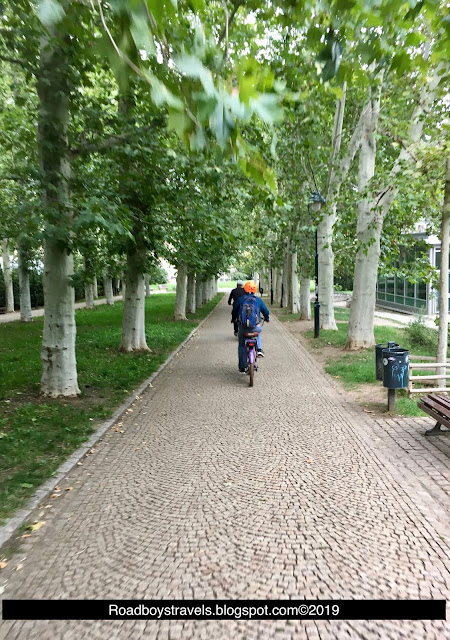Van Gogh in St. Remy
A Visit to Eygalieres and the Pont Du Gard
The next two days of cycling were jam packed full of scenery and pure cycling bliss.
After Van Gogh departed St. Remy he journeyed to Paris for a visit Theo and his new wife for two days. He then left for Auvers-sur-Olse an artist commune north of Paris.
In Auvers he suffered a gunshot would to his chest (unknown as to whether the shooting was self-inflicted or if he was shot by someone else).
So, just two months after departing Saint Paul, Van Gogh was dead.
After our tour we walked to dinner at the home of a local master pastry chef named Odille. The dinner and Odille's hospitality left us feeling as if we were part of her family for one lovely evening.
A Visit to Eygalieres and the Pont Du Gard
The next two days of cycling were jam packed full of scenery and pure cycling bliss.
Cycling in Heaven
We began Day 4 with another amazing breakfast and then all strolled to the market square in front of the St. Remy's Hotel de Ville (City Hall). At the market we all assembled makings for our picnic lunches.
Now, while I can find almost no more joyful activity than perusing fresh fruit and produce, olives and cheese at an open air market, the experience underscored how tragic America's diet is. The French buy small quantities of clean gmo-free food and eat fresh. Americans jump in a Tahoe and shop at Costco (where we blow the wheels off those giant shopping carts).
They buy fresh.
We load up the freezer.
Ugh.
Now it was off to ride to the picturesque village of Eygalieres. Here we stopped to enjoy its galleries and eat lunch. After lunch we cycled up a pass through the "heart" of the Alpilles (little alps). Along the way we stopped to admire some painters at work. And, after a long climb we sailed down a long downhill glide back to St. Remy.
The Alpilles From Eygalieres
Fresh Tomatoes For Sale Eygalieres
(guarded by a very sleepy kitty)
Landscape Painters Along the Way
Vineyards at the Base of the Alpilles
In the evening returning we met with Mathilde, St. Remy's expert on Van Gogh who walked us through the Saint Paul asylum where the artist committed himself for one year from May of 1889 to May 1890. It is here where he was arguably most prolific. Many of his paintings include his doctor, the asylum itself was a former abbey and includes views of gardens and the hillsides that surrounded it. While here he attempted suicide (by ingesting his own paint). Mathilde brought his story to life for us. His failed friendships with peers (including Paul Gauguin), the close relationship with his brother Theo and his short and tortured life before, during and after departing St. Remy.
Mathilde Describes the Sites Van Gogh Painted
Saint Paul Asylum in Saint Remy
Ice Baths Were Used to Calm Patients at St. Paul
The Cloister at St. Paul
In Auvers he suffered a gunshot would to his chest (unknown as to whether the shooting was self-inflicted or if he was shot by someone else).
So, just two months after departing Saint Paul, Van Gogh was dead.
After our tour we walked to dinner at the home of a local master pastry chef named Odille. The dinner and Odille's hospitality left us feeling as if we were part of her family for one lovely evening.
Day 5 was the longest ride of the trip (about 45 miles). We cycled past lush vineyards and up a long hill past the Stations of the Cross to the the hilltop Abbayes St. Michel de Frigolet (Frigolet Abbey). The abbey dates back to 960 and has passed through many hands (including being conscripted from the church after the French Revolution).
Angelic Details in the Chuch at Frigolet Abbey
The day concluded with by riding to the largest standing Roman aquaduct in France, the Pont Du Gard. The aquaduct, built to carry water to Nimes, stands as a tribute to Roman engineering. It was constructed in the first century AD and ranks as the highest aquaduct ever to be built by the Romans. The stone used in the aquaduct was cut and laid so precisely there was no need for grout.
After taking a cool dip in the Gardon River below the Pont, we surrendered our bikes and boarded a bus to transfer to our lovely new accommodations in Villeneuve-les-Avignon.
Raodboys Travels © 2019










































